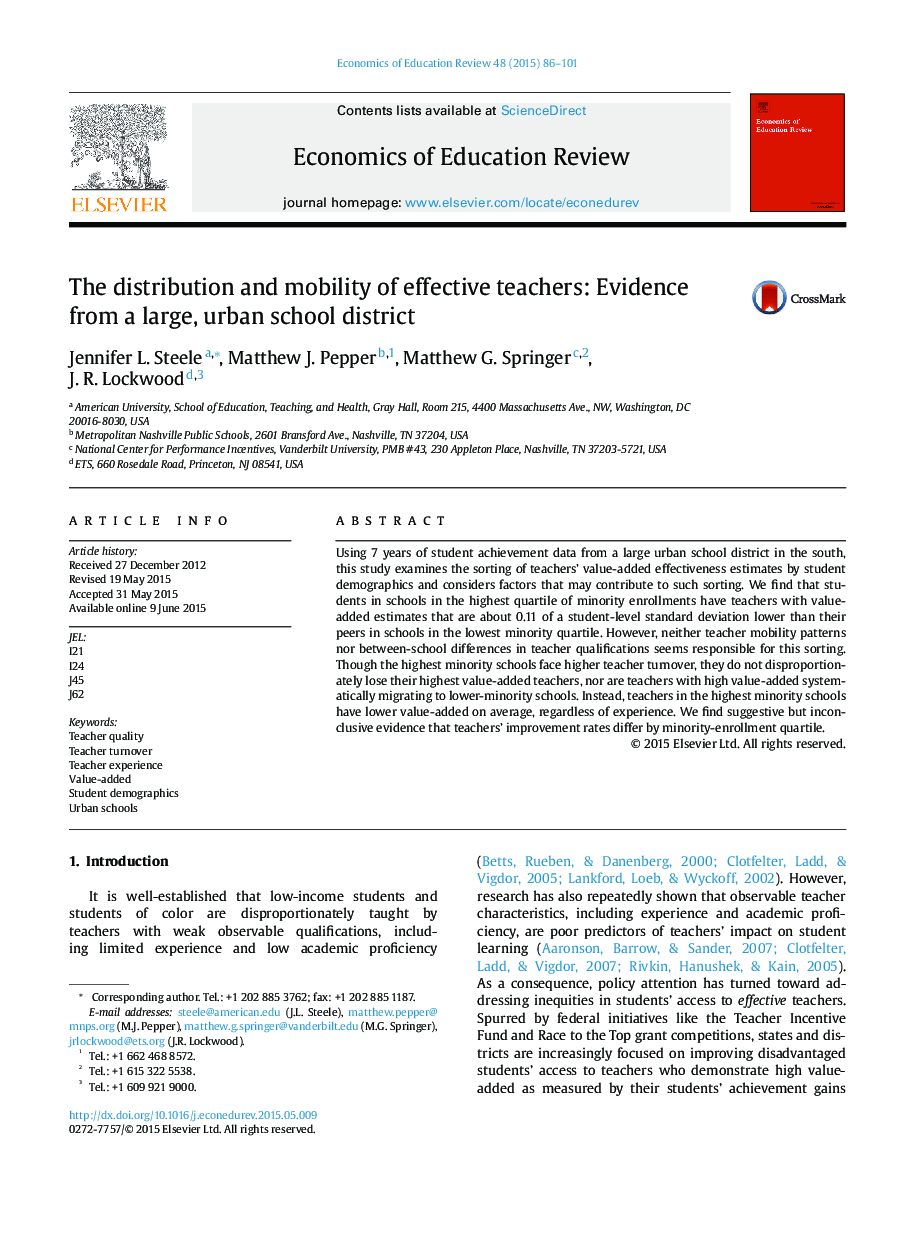| Article ID | Journal | Published Year | Pages | File Type |
|---|---|---|---|---|
| 354353 | Economics of Education Review | 2015 | 16 Pages |
•Study examines teachers of grades 4–8 in a large, urban district in the south.•Thirteen percent of variation in teacher value-added is between schools.•Teacher value-added and qualifications are negatively linked to minority enrollment.•Teacher mobility does not seem to drive the sorting of teacher value-added.
Using 7 years of student achievement data from a large urban school district in the south, this study examines the sorting of teachers’ value-added effectiveness estimates by student demographics and considers factors that may contribute to such sorting. We find that students in schools in the highest quartile of minority enrollments have teachers with value-added estimates that are about 0.11 of a student-level standard deviation lower than their peers in schools in the lowest minority quartile. However, neither teacher mobility patterns nor between-school differences in teacher qualifications seems responsible for this sorting. Though the highest minority schools face higher teacher turnover, they do not disproportionately lose their highest value-added teachers, nor are teachers with high value-added systematically migrating to lower-minority schools. Instead, teachers in the highest minority schools have lower value-added on average, regardless of experience. We find suggestive but inconclusive evidence that teachers’ improvement rates differ by minority-enrollment quartile.
